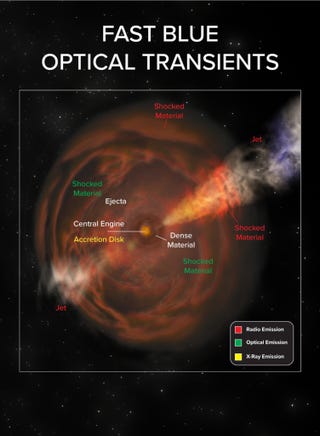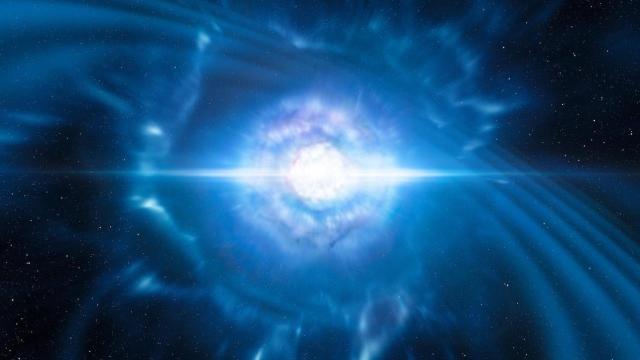On September 7, 2022, the Zwicky Transient Facility detected a new transient object in deep space, about one billion light-years from Earth. The object was very bright, and now, a team of astronomers believes it’s a star that’s come back from the dead.
The object was a star: a luminous fast blue optical transient, or LFBOT for short. The star is named AT2022tsd, but affectionately called the Tasmanian Devil. Now, a team of researchers posit that the flaring activity exhibited by the object and others like it is caused by either black holes or neutron stars, some of the densest objects in the universe. Analysis of the star and its repeated outbursts was published this week in Nature.
“We don’t think anything else can make these kinds of flares,” said Anna Ho, an astronomer at Cornell University and the study’s lead author, in a university release. “This settles years of debate about what powers this type of explosion, and reveals an unusually direct method of studying the activity of stellar corpses.”
The Tasmanian devil is an extragalactic optical transient—in plain terms, an object that brightened temporarily in the sky and exists far outside the limits of our own galaxy. The devil only brightened over a period of several months, for several minutes at a time—brief compared to supernovas, the most common extragalactic transient, which can brighten for weeks.
The devil is similar to ‘the Cow,’ a fast blue optical transient which flashed in the sky back in 2018. The cow—AT2018cow for long—was thought to have been caused by a black hole or a neutron star at the time, based on the frequency of its X-ray emissions.
Black holes and neutron stars are very compact objects that take shape in the aftermath of stars. When stars die, their cores can collapse, forming the denser objects. Black holes are so dense that light cannot escape their gravitational pull beyond their event horizons, hence their name. But the bright, fleeting flashes detected by the recent astronomical team suggests that these dense end-stages of stars were still kicking.
“The corpse is not just sitting there, it’s active and doing things that we can detect,” Ho said. “We think these flares could be coming from one of these newly formed corpses, which gives us a way to study their properties when they’ve just been formed.”

The devil is the latest in this unique group of light sources. (There is also the ‘Koala,’ spotted by ZTF in 2018.) The objects’ names do not refer to any particular characteristics they display; rather, they are produced by quirks in the astronomical naming process (the Cow’s astronomical name ends with “cow”, the Koala’s ends with “kwla,” and the devil’s ends with “tsd.”)
So though the Tasmanian Devil exhibits outbursts similar to the marauding marsupial from Looney Tunes (itself obviously named after the real-life mammal), its name is derived from a fun trend in astronomical nomenclature.
Dheeraj Pasham, an astronomer at MIT and lead author of a 2021 paper scrutinizing the Cow, told Gizmodo at the time that, “I think the Cow is just the beginning of what is to come,” and “more such objects would provide a new window into these extreme explosions.”
Indeed, the Devil is the next object in this line of fast blue optical transients. As more are detected, researchers can home in on the intense and odd behaviors that mark a star’s end.
